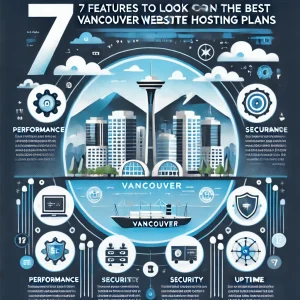The Internet of Things or IoT as it’s come to be abbreviated has changed the role of the objects around us and the means by which we interact with them and that’s because the focus has shifted to enhancing customer experience for IoT and enabled devices. Data is now collected with the help of smart components, and businesses then probe it for insights to make smarter decisions about their products.
The majority of these smart components are sensors, microprocessors, niche software, data storage techniques and tailor-made operating systems. They work collectively to leverage information derived from the data, and the way that’s done is causing that technology to be adapted by everyday people making everyday things.
A new phase of user experience, Smart User Experience, has grown out of this and it has made the customer experience within IoT increasingly important. Here at 4GoodHosting, part of what makes us a top Canadian web hosting provider is the way we’ve got our ears to the ground with developments of this sort that carry weight in the digital world and will be of interest to our customers accordingly. Today, we’ll look at 6 ways you can enhance customer experience with IoT devices.
Smartest Users
Customer experience is playing an extremely vital role for connected devices, and more specifically smart user experience is front and centre with smart technologies pushing it forward. Being aware of their surroundings and sensing changes in their circumstances allows these IoT devices to take on measures that can be implemented to enhance their functionality.
A quality smart user experience via the right interface enables companies to offer product iterations that consistently drive up the engagement factor and enhance the customer experience when using IoT devices.
So those of you planning to provide a phenomenal customer experience for IoT products will want to take a detailed and deeply introspective look at how you design an IoT device. It will without a doubt dictate the way in which users interact with your products.
-
Exercise Clean Design
Introducing a UX-based functionality that fails to comply with the core values that the product aims to provide is going to put you in a bad spot right off the hop. For example, adding Google Search through the touch screen of a bread maker might seem ingenious, but it will most likely be a distraction and nothing more. An interactive menu that provides quick recipes for different types of breads would be a much better and welcome choice.
Features should always be introduced in a way that has them taking advantage of the core functionality of the device. Keeping the engagement quotient relevant and as unadulterated as possible is really important.
-
Introduce Smart Automation
Function should be right up there with the look and feel of the product too. Since IoT-enabled devices come equipped with sensors, they can easily capture loads of data regarding all sorts of inputs.
The product should then be using this data to learn extensively about the user’s use preferences and then begin taking smart and automated decisions on its own. An air conditioning system that learns the correlation between the weather outside and the preferred temperature of the user would be a great example. If it then starts keeping the home temperature optimized autonomously, obviously the customer experience for the IoT device is enhanced in a big way .
-
Personalize the Interface
Smart interface designing in IoT can be personalized by users according to their preferences and this takes UX to a new level entirely.
A good example is the POP Home Switch, made by Logitech. It can be quickly customized by the user to take control of the smart devices in the house by making use of custom recipes. A single click turns on the TV, while a double one activates the AC and locks the door.
-
Beyond Screens Approach
The examples listed above prove that a successful strategy for customer experience for IoT involves thinking beyond the usual interfaces based around screens. This is possible when you leverage the capabilities of sound, gestures and intuitive movements rather than designing a simple screen-based user interface.
Your IoT device design should make things simpler while not introducing more complexity into the equation, but at the same time being designed in a way that it involves a minimal amount of training being required for the user.
There’s an interactive IoT powered product called Knock that’s a great example here. This small wireless device has a simple yet powerful design that converts any ordinary service into a control interface, with users knocking on the service and the device then carrying out the user-defined functions on the basis of the number of knocks entered.
This is an excellent example of a smart interface design as it’s especially simple for the user.
-
Have a Broad Perspective
It is indeed important to design for the appliance, but you’ll also need to keep in mind the broader picture and grasp the perspective of the whole IoT ecosystem.
How is your device going to fit into this ecosystem?The reason this question is important is that the technological backdrop today is driven through screens and the UI of your IoT device can become lost along the way.
The best aim is to design it with the intent of keeping machine-to-machine interaction to the maximum and autonomous behaviour to a minimum. Ensure your IoT device is able to easily integrate with the existing ecosystem, and not ending up creating one on of its own.
-
Engagement Design
Engagement is always the primary and most valuable aim for IoT devices. The more the user interacts with the IoT system, the more data that can be collected and the system is then more able to optimize itself accordingly for best results and customer satisfaction. But it is also crucial to place the center of control in the hands of the users. Simply, the interface design should make them feel like they are entirely in control.
Remote user interfaces go a long way in this regard, and they go very well with the core idea of the Internet of Things where a connected virtual world that can be accessed and controlled anywhere and anytime is the big picture goal.
Designing for scenarios that enable automatic remote access is the trend now.One example would be an IoT application where when you start your car before heading home at the end of the workday, the air conditioning system of your house will be activated to reach your optimum temperature when you arrive.
In conclusion, it is crucial that you make your IoT platform - whether one already in the market or one you are developing yourself - to be a memorable experience for your users that drives them to the maximum amount of engagement.The key here is to make the functioning of the platform as immersive, personalized and simple as possible, and combining the experience of various devices from an array of companies to capture as much market as possible is a wise approach.
Making your product ‘smart’ is not enough to grab the attention of users these days. You need to carve out your niche by doing what your competition has yet to do, and that is focusing more on designing smart interfaces and the UX experience overall.












